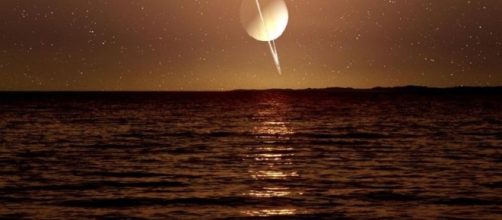When most people talk about settling the high frontier of space, they think about either the moon, with its wealth of exploitable resources, or Mars, which is the most Earth-like and could be made even more so through terraforming. However, an article in the New Scientist makes an outside the box case for Saturn’s Moon Titan. The key to settling Titan, as it turns out, is the availability of energy.
What is it like on Titan?
Titan is remarkably Earth-like if our planet were to have a temperature of minus 290 degrees Fahrenheit and a surface gravity of 14 percent that of Earth.
Titan has a thick, nitrogen atmosphere with traces of hydrogen, methane, and ethane. Titan is the only other world in the solar system that has rivers, streams, lakes, and seas. However, these bodies consist of liquid hydrocarbon that falls as rain. Titan has few impact craters but may have cryovolcanoes
The key to living on Titan is power
Since Titan is so far from the sun and has a thick, cloudy atmosphere, solar energy is not a very viable option. The old mainstay of nuclear power is certainly available. However, Titan provides a number of alternatives for generating enough power to sustain a large colony of humans indefinitely.
Methane might be a readily available energy source, except that there is a lack of oxygen on Titan to combust the product.
In any case, a Titan colony would likely sell methane as rocket fuel. A better fuel source would be acetylene, which is theatrically available on Titan’s surface but has yet to be detected.
Conventional hydropower would be problematic. A better option would be to plant turbines to pick up the tides and thus generate power. An area called the Throat of Kraken through which liquid hydrocarbons flow to and from the northern parts of the Kraken Mare.
Wind turbines could be deployed on the upper atmosphere of Titan and pick up plenty of power. The technology does not exist yet, but we have plenty of time to work on it before humans get as far as the Saturn system.
Solar is not as viable an option, at least at current capabilities.
By the time people are ready to start a settlement on Titan, solar panels might be deployed on the surface of Saturn’s moon. One estimate suggests that 10 percent of Titan’s surface could support a settlement of 300 million people, about the population of the United States.
The question remains, why would one go to the trouble of settling Titan, with its harsh conditions? That is a question that would best be answered in the 22nd Century.


